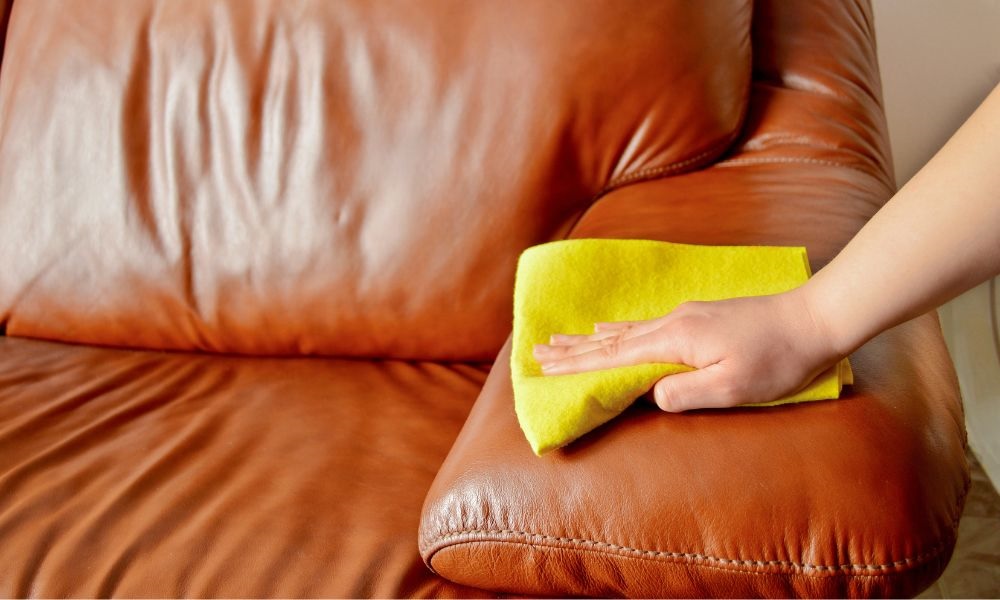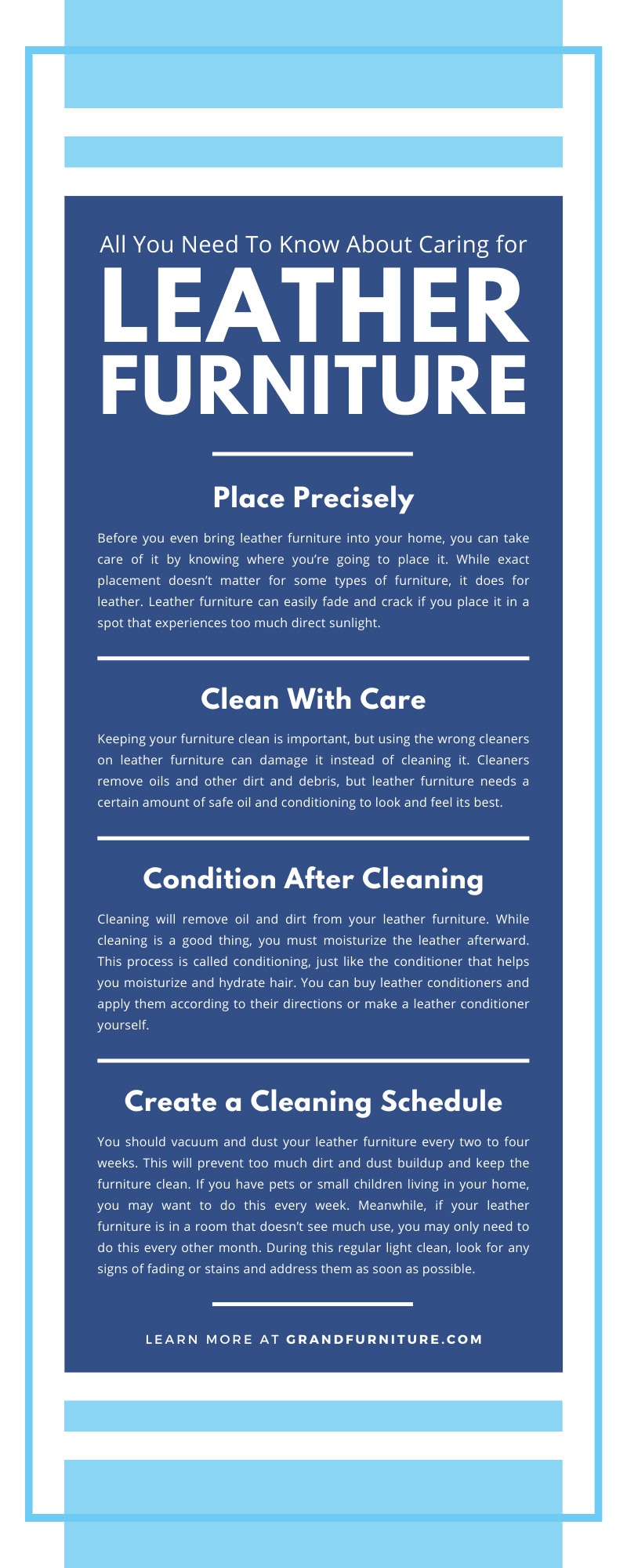
All You Need To Know About Caring for Leather Furniture
Most homeowners know that when they get new furniture, that furniture will require a certain amount of upkeep. All furniture requires care to keep it functioning well and looking nice. But leather furniture requires extra maintenance and care since it’s so different from traditional fabric upholstery. Keep reading to learn all you need to know about caring for leather furniture and prepare yourself to keep up with this investment.
Place Precisely
Before you even bring leather furniture into your home, you can take care of it by knowing where you’re going to place it. While exact placement doesn’t matter for some types of furniture, it does for leather. Leather furniture can easily fade and crack if you place it in a spot that experiences too much direct sunlight.
Once you know you want leather furniture, you need to measure your space to know what pieces of furniture can fit where. If the only option is to place the piece in a spot that receives lots of direct sunlight, then you may want to invest in some type of window shade. Blinds will help protect leather, but fabric curtains offer better protection. Either option can play a crucial role in maintaining your investment. Once you’ve determined the best layout for your space, you can bring the furniture in and trust that it will last a long time.
Clean With Care
Keeping your furniture clean is important, but using the wrong cleaners on leather furniture can damage it instead of cleaning it. Cleaners remove oils and other dirt and debris, but leather furniture needs a certain amount of safe oil and conditioning to look and feel its best.
Try to only use specific leather cleaners or a homemade mixture of 50/50 vinegar and water to avoid stripping the leather of its oils. Leather furniture cleaner and this homemade cleaning mixture will remove the dirt and debris you don’t want on your furniture without hurting the material. You can use a soft microfiber cloth for extra protection.
Soap, even oil soap or mild soap, can remove the leather color or stain the material, so you should avoid using them at all costs. The same rule applies to detergent.
Condition After Cleaning
As we mentioned, cleaning will remove oil and dirt from your leather furniture. While cleaning is a good thing, you must moisturize the leather afterward. This process is called conditioning, just like the conditioner that helps you moisturize and hydrate hair. You can buy leather conditioners and apply them according to their directions or make a leather conditioner yourself.
To make your own leather conditioner, you’ll need 4 cups of warm water, a tablespoon of natural baby soap, and several drops of vinegar. Natural baby soap is an exception to the “no soap” rule due to its hydrating properties. Once you thoroughly combine this mixture, you can use it to moisten a microfiber cloth and gently apply the cloth to the leather, working in small circles. Do not soak the leather or harshly scrub it—just gently wipe it over the leather and leave it to dry.
Create a Cleaning Schedule
Now that you know how to clean and condition your leather furniture, you need to know how often to do so. Deep cleaning and conditioning isn’t something you’ll need to do often, but it’s still an important chore to keep up with.
You should vacuum and dust your leather furniture every two to four weeks. This will prevent too much dirt and dust buildup and keep the furniture clean. If you have pets or small children living in your home, you may want to do this every week. Meanwhile, if your leather furniture is in a room that doesn’t see much use, you may only need to do this every other month. During this regular light clean, look for any signs of fading or stains and address them as soon as possible.
Clean the furniture more thoroughly every other month if the pieces are in a high-use area. Like vacuuming and dusting, you may have to do this more often depending on where the furniture is in the home, who uses it, and how frequently people use it. If you don’t use your leather furniture as much, you can clean it less often.
You should only condition your leather furniture once a year at most. Over-conditioning can make the material feel sticky and cause dust and dirt to cling to it. If you must clean your leather a lot, though, you may want to condition it twice a year just to make sure it receives the proper hydration.
Address Stains Quickly
As soon as you notice a stain, you should address it so that it doesn’t damage your furniture. Different stains require different actions, and we describe some of the solutions below.
Clean dark stains with a 1:1 combination of lemon juice and cream of tartar. Rub the combination onto the stain with a microfiber cloth and allow it to sit for 10 minutes. Apply another layer afterward, then wipe it away with another cloth dipped in a combination of warm water and moisturizing soap.
Clean oil stains with baking soda or cornstarch. Rub the powder gently into the stain, letting it sit for 4–8 hours, allowing the powder to fully absorb the oil. Once the powder absorbs the oil, wipe it off with a microfiber cloth.
Clean water stains with distilled water. While this seems counterintuitive, the water stain is probably from minerals in the water, which aren’t present in distilled water. Dampen a microfiber cloth with distilled water and work over the water stain in small circles, leaving it to dry for several hours. Condition the cleaned area afterward so that the area doesn’t dry out.
One thing you need to know when caring for leather furniture is that you must care for it regularly and precisely. While there are a lot of steps to follow, you can successfully maintain your furniture by keeping a cleaning schedule and knowing what products to use. If you’re worried that leather furniture is too much to take care of or too expensive, Grand Furniture can help. Come into our store to talk about furniture upkeep tips and learn about buying furniture on credit so that you can confidently take the pieces you want home.



